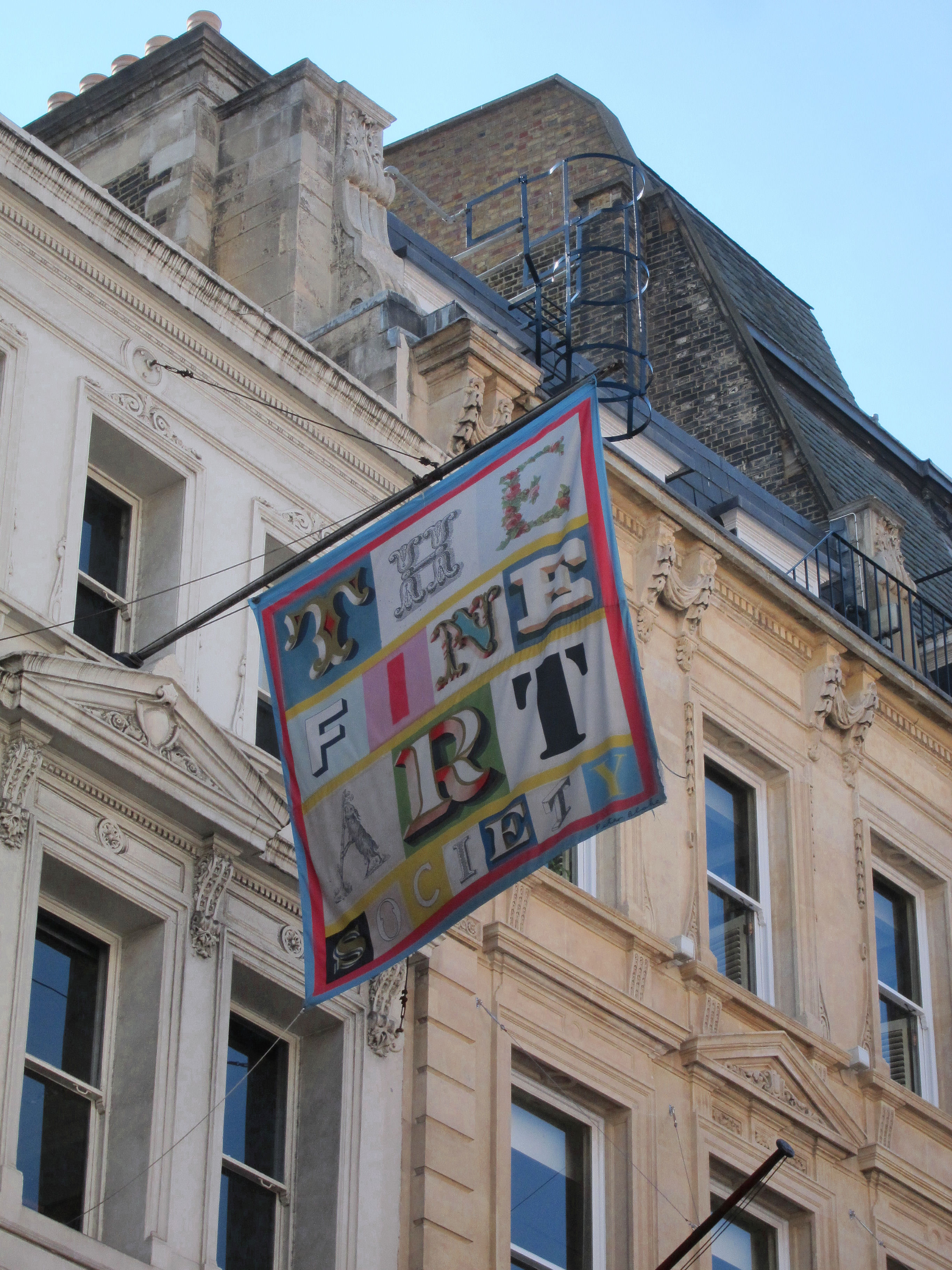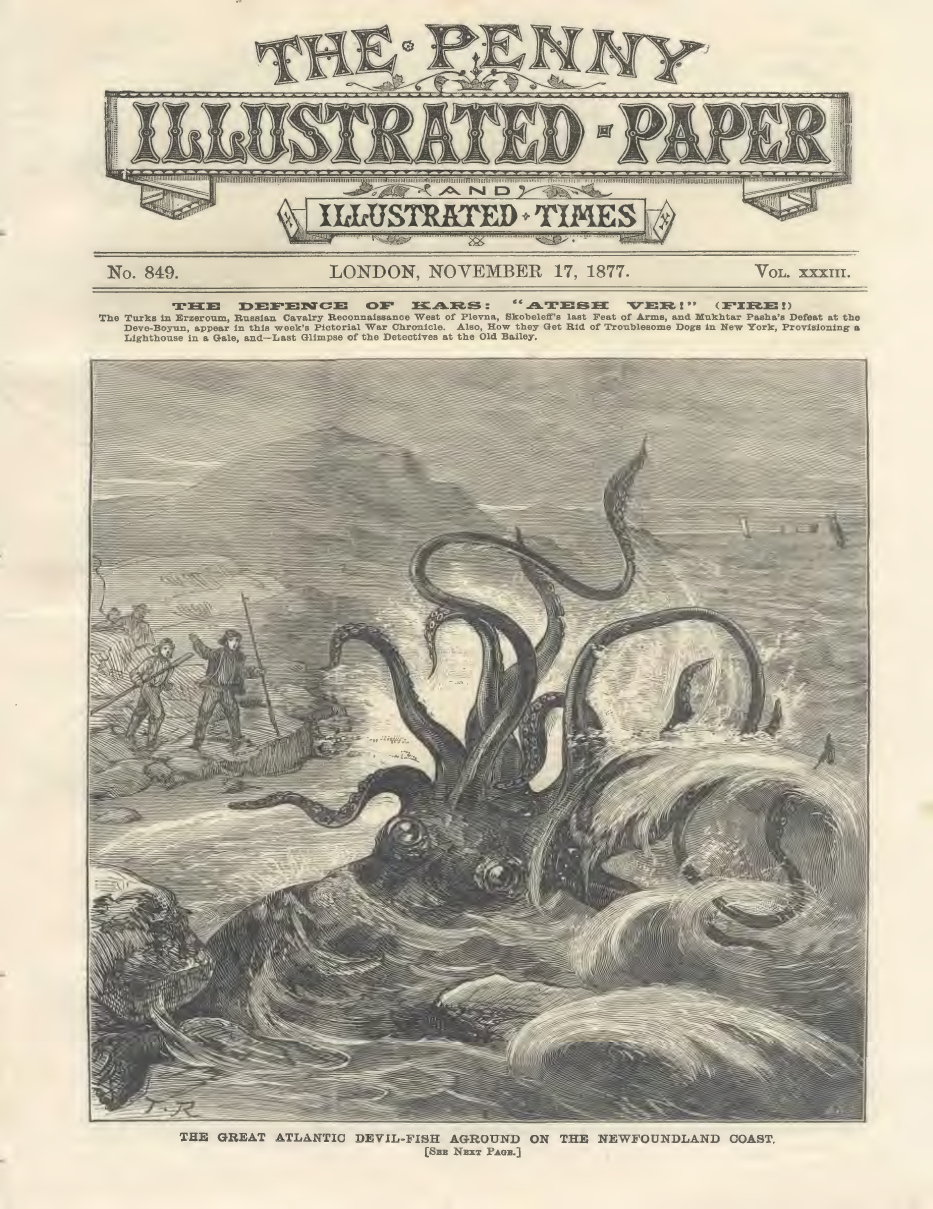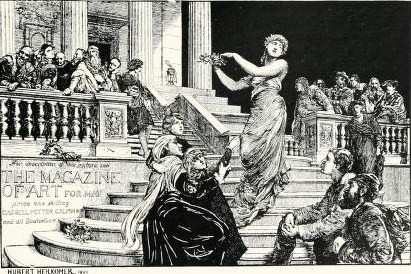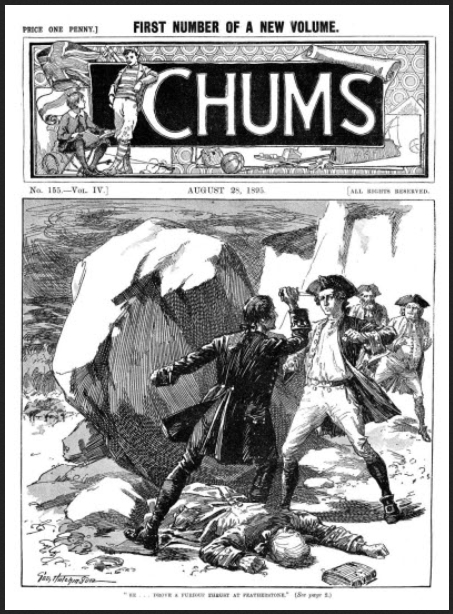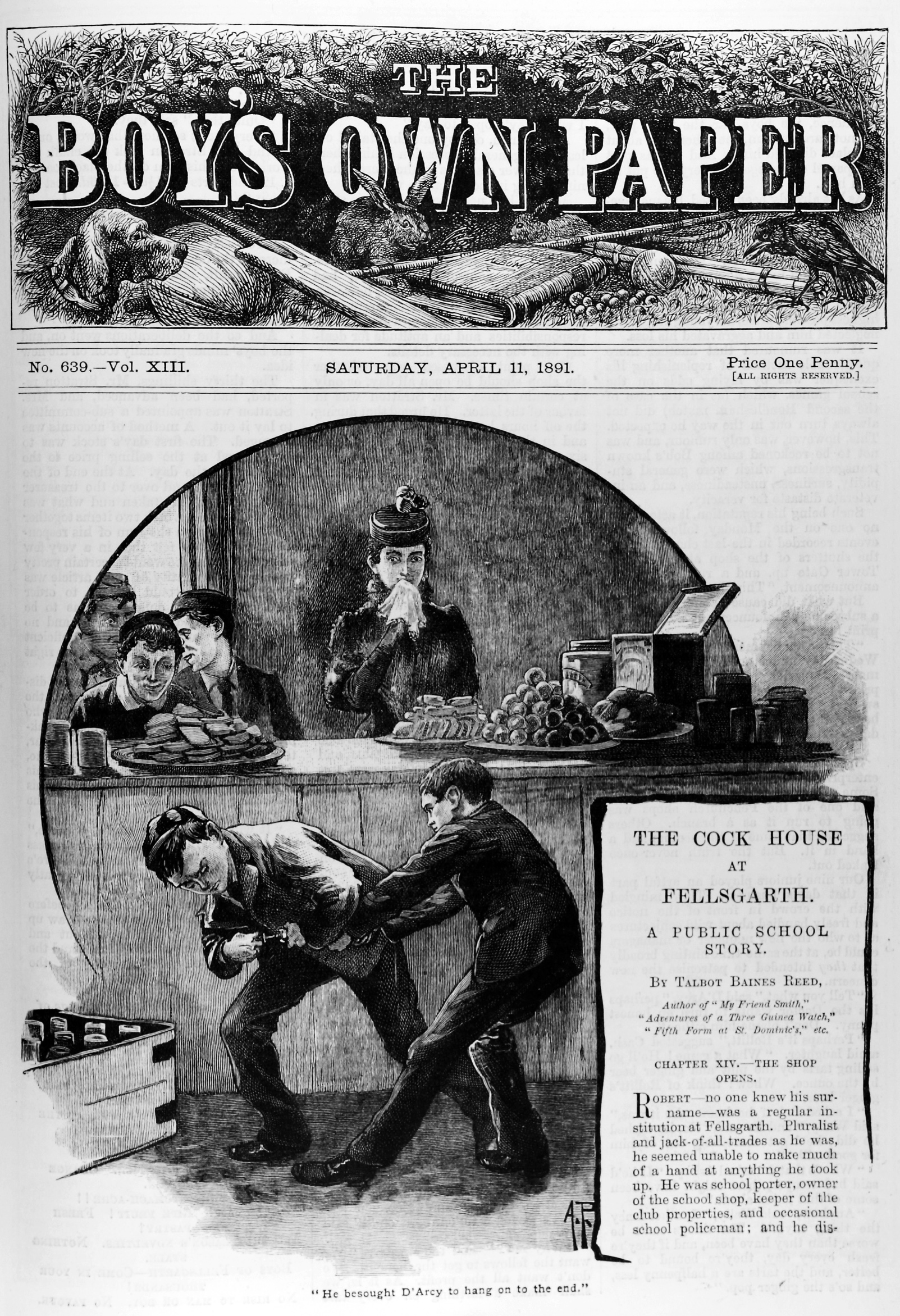|
William Heysham Overend
William Heysham Overend (5 October 185118 March 1898) was a British marine artist and book illustrator who died prematurely in 1898. Early life William Heysham Overend was born on 5 October 1851 in Coatham, County Durham. Many sources state that his birthplace was Coatham, North Yorkshire near Middlesbrough. However, it seems more likely that his birthplace was Coatham Mundeville near Darlington, as: *His birth was registered in Darlington, Durham. *He was baptised in St Cuthbert's Church, Darlington, less than 6.5 km from Coatham Mundeville. *He and his parents gave Darlington as his birthplace on census returns. *Mayhew's statement that he was born miles inland (Coatham in Yorkshire is on the coast). His parents were James Overend (18212 November 1875), a flax spinner, born in Bentham, Yorkshire, and Martha née Hodgson (1824–1886), born in Hawkshead, Lancashire and the daughter of Braithwaite Hodgson, a wealthy landowner. The family lived in Priestgate, Darlington ... [...More Info...] [...Related Items...] OR: [Wikipedia] [Google] [Baidu] |
Coatham Mundeville
Coatham Mundeville is a village in the borough of Darlington and the ceremonial county of County Durham, England. It is situated a short distance from Brafferton, on the A167 between Newton Aycliffe and Darlington Darlington is a market town in the Borough of Darlington, County Durham, England. The River Skerne flows through the town; it is a tributary of the River Tees. The Tees itself flows south of the town. In the 19th century, Darlington underwen .... References External links Villages in County Durham Places in the Borough of Darlington Places in the Tees Valley {{Durham-geo-stub ... [...More Info...] [...Related Items...] OR: [Wikipedia] [Google] [Baidu] |
Illustrated London News
''The Illustrated London News'' appeared first on Saturday 14 May 1842, as the world's first illustrated weekly news magazine. Founded by Herbert Ingram, it appeared weekly until 1971, then less frequently thereafter, and ceased publication in 2003. The company continues today as Illustrated London News Ltd, a publishing, content, and digital agency in London, which holds the publication and business archives of the magazine. History 1842–1860: Herbert Ingram ''The Illustrated London News'' founder Herbert Ingram was born in Boston, Lincolnshire, in 1811, and opened a printing, newsagent, and bookselling business in Nottingham around 1834 in partnership with his brother-in-law, Nathaniel Cooke.Isabel Bailey"Ingram, Herbert (1811–1860)" ''Oxford Dictionary of National Biography'', Oxford University Press, 2004 accessed 17 September 2014] As a newsagent, Ingram was struck by the reliable increase in newspaper sales when they featured pictures and shocking stories. Ingram beg ... [...More Info...] [...Related Items...] OR: [Wikipedia] [Google] [Baidu] |
Fine Art Society
The Fine Art Society is a gallery based in both London and in Edinburgh's New Town (originally Bourne Fine Art, established 1978). The New Bond Street, London gallery closed its doors in August 2018 after being occupied by The Fine Art Society since February 1876, the entrance façade of which was designed in 1881 by Edward William Godwin (1833–1886). History Founded in 1876 by a group of like-minded men led by William Longman of the publishing family, Marcus Bourne Huish (1843–1904), lawyer, editor, writer and collector, who became the first managing director while at the same time editing ''The Art Journal''; and Archibald Stuart-Wortley MP. The gallery, first managed by Ernest Brown (later founder of Leicester Galleries) has for many years largely concentrated on British art and design from 1600 to the present day; with the Edinburgh premises specialising in Scottish art of the same period. The Edinburgh branch of the company is directed by Emily Walsh. The chairmen were ... [...More Info...] [...Related Items...] OR: [Wikipedia] [Google] [Baidu] |
An August Morning With Farragut The Battle Of Mobile Bay, August 5, 1864
An, AN, aN, or an may refer to: Businesses and organizations * Airlinair (IATA airline code AN) * Alleanza Nazionale, a former political party in Italy * AnimeNEXT, an annual anime convention located in New Jersey * Anime North, a Canadian anime convention * Ansett Australia, a major Australian airline group that is now defunct (IATA designator AN) * Apalachicola Northern Railroad (reporting mark AN) 1903–2002 ** AN Railway, a successor company, 2002– * Aryan Nations, a white supremacist religious organization * Australian National Railways Commission, an Australian rail operator from 1975 until 1987 * Antonov, a Ukrainian (formerly Soviet) aircraft manufacturing and services company, as a model prefix Entertainment and media * Antv, an Indonesian television network * ''Astronomische Nachrichten'', or ''Astronomical Notes'', an international astronomy journal * ''Avisa Nordland'', a Norwegian newspaper * '' Sweet Bean'' (あん), a 2015 Japanese film also known as ... [...More Info...] [...Related Items...] OR: [Wikipedia] [Google] [Baidu] |
Navy Records Society
The Navy Records Society was established in 1893 as a scholarly text publication society to publish historical documents relating to the history of the Royal Navy. Professor Sir John Knox Laughton and Admiral Sir Cyprian Bridge were the key leaders who organized the society, basing it on the model of earlier organisations such as the Hakluyt Society and the Camden Society. The American naval historian, Rear Admiral Alfred Thayer Mahan, was one of the first overseas members to join the Navy Records Society. The society has published volumes of original documents and papers almost every year since its foundation. The volumes cover all the major figures in British naval history, such as Nelson, Beatty and Cunningham, and a wide range of topics, from signals and shipbuilding to strategy and politics. In 2006 the NRS published its 150th volume. Recent volumes Online magazine The society has recently augmented its traditional book publishing activities with the launch of it ... [...More Info...] [...Related Items...] OR: [Wikipedia] [Google] [Baidu] |
Penny Illustrated Paper
The ''Penny Illustrated Paper'' was a cheap ( 1d.) illustrated London weekly newspaper that ran from 1861 to 1913. Premises Illustrated weekly newspapers had been pioneered by the ''Illustrated London News'' (published from 1842, costing fivepence): its imitators included the ''Pictorial Times'' (1843–48), and – after the 1855 repeal of the Stamp Act – the ''Illustrated Times''. With the abolition of paper duty in 1861 it was possible to envisage an even cheaper mass-circulation illustrated weekly. History The first issue, 12 October 1861, announced itself confidently under the masthead "PENNY ILLUSTRATED PAPER: With All the News of the Week": "A new era opens upon the people. In producing a paper for the million, let us plainly say, we want be esteemed the friend of the people ... A new era is opened to us by the Repeal of the Paper Dutie The paper was apparently initially the charge of Ebenezer Farringtonbr>but the wife and sons of the recently deceased Her ... [...More Info...] [...Related Items...] OR: [Wikipedia] [Google] [Baidu] |
London Society
''London Society'' was a Victorian era illustrated monthly periodical, subtitled "an illustrated magazine of light and amusing literature for the hours of relaxation". It was published between 1862 and 1898 by W. Clowes and Sons, London. The magazine published miscellaneous articles, short fiction (mostly anonymous), and serialized novels. ''The Stanford Companion to Victorian Fiction'' called it "an inferior imitator of Smith's '' Cornhill''". Literary contributors included Charlotte Riddell, whose novels ''Above Suspicion'' (1874) and ''The Senior Partner'' (1881-2) were serialized; Florence Marryat (''Open Sesame''); and a pre-Sherlock Holmes Arthur Conan Doyle. Illustrators included Mary Ellen Edwards, Randolph Caldecott, Harry Furniss, F. A. Fraser, and George Cruikshank. References * Cooke, Simon. ''Illustrated Periodicals of the 1860s''. Pinner, Middlesex: Private Libraries Association, 2010 External links ''London Society''index at The Online Books Page The Onl ... [...More Info...] [...Related Items...] OR: [Wikipedia] [Google] [Baidu] |
The Leisure Hour
''The Leisure Hour'' was a British general-interest periodical of the Victorian era which ran weekly from 1852 to 1905. It was the most successful of several popular magazines published by the Religious Tract Society, which produced Christian literature for a wide audience. Each issue mixed multiple genres of fiction and factual stories, historical and topical. The magazine's title referred to campaigns that had decreased work hours, giving workers extra leisure time. Until 1876, it carried the subtitle "A Family Journal of Instruction and Recreation"; after that, the subtitle changed to "An illustrated magazine for home reading". Each issue cost one penny and contained 16 pages. The layout typically included approximately six long articles, formatted in two columns per page, and five or six illustrations. The articles were a mix, including biographies, poetry, essays, and fiction. Each issue usually started with a piece of serialised fiction. The creation of the magazine was pa ... [...More Info...] [...Related Items...] OR: [Wikipedia] [Google] [Baidu] |
The Magazine Of Art
''The Magazine of Art'' was an illustrated monthly British journal devoted to the visual arts, published from May 1878 to July 1904 in London and New York City by Cassell, Petter, Galpin & Co. It included reviews of exhibitions, articles about artists and all branches of the visual arts, as well as some poetry, and was lavishly illustrated by leading wood-engravers of the period such as William Biscombe Gardner.Joanne Shattock. ''The Cambridge bibliography of English literature'', Volume 4 (Cambridge University Press, 2000) p. 2962.Liela Rumbaugh Greiman"William Ernest Henley & The Magazine of Art" ''Victorian Periodicals Review'' Vol. 16, No. 2 (Summer, 1983), pp. 53–64 (Retrieved 9 Sep 2010) History Its origins can be traced back to May 1851, when the House of Cassell started publication of a journal devoted to The Great Exhibition of that year. It evolved, in 1852, into ''The Illustrated Exhibitor and Magazine of Art'', a weekly devoted to the arts, educational in purpose an ... [...More Info...] [...Related Items...] OR: [Wikipedia] [Google] [Baidu] |
The Graphic
''The Graphic'' was a British weekly illustrated newspaper, first published on 4 December 1869 by William Luson Thomas's company Illustrated Newspapers Ltd. Thomas's brother Lewis Samuel Thomas was a co-founder. The premature death of the latter in 1872 "as one of the founders of this newspaper, nd whotook an active interest in its management" left a marked gap in the early history of the publication. It was set up as a rival to the popular ''Illustrated London News''. The influence of ''The Graphic'' within the art world was immense, its many admirers included Vincent van Gogh, and Hubert von Herkomer.Mark Bills, "Thomas, William Luson (1830–1900)", ''Oxford Dictionary of National Biography'', Oxford University Press, 2004 It continued to be published weekly under this title until 23 April 1932 and then changed title to ''The National Graphic'' between 28 April and 14 July 1932; it then ceased publication, after 3,266 issues. From 1890 until 1926, Luson Thomas's company, ... [...More Info...] [...Related Items...] OR: [Wikipedia] [Google] [Baidu] |
Chums (paper)
''Chums'' was a boys' weekly newspaper started in 1892 by Cassell & Company and later, from 1927, published by Amalgamated Press. The publisher gathered the weekly paper into monthly and annual editions. The monthly versions were published on the 25th of the month, and up to November 1920 included all the content of the weekly editions. From then on, the monthly editions had all the story content of the weeklies, but left out the covers. This left a gap which was then filled by short stories, articles and even serials that were not included in the weekly edition.The serial ceased publication in 1941. ''Chums'' was notably the sponsor of the Chums League, Chums Society of Stamp Collectors, Chums Scouts, the British Boy Scouts and the British Boys Naval Brigade/National Naval Cadets. ''Chums'' is one of the most highly sought-after boys' papers by collectors due to its distinctive and attractively illustrated red covers. History Started by Cassell & Company in 1892 as a weekly news ... [...More Info...] [...Related Items...] OR: [Wikipedia] [Google] [Baidu] |
The Boy's Own Paper
''The Boy's Own Paper'' was a British story paper aimed at young and teenage boys, published from 1879 to 1967. Publishing history The idea for the publication was first raised in 1878 by the Religious Tract Society, as a means to encourage younger children to read and to instill Christian morals during their formative years. The first issue was published on 18 January 1879. The final issue, a "Special Souvenir Edition, Price 2/-", was dated February 1967 and was published on 27 January 1967. It was a facsimile reprint of the first issue, complete with adverts. It had a panel on the front cover giving a very brief history and stating that it would "appear in future as the BOY'S OWN ANNUAL, edited by Jack Cox". The paper was published weekly in a cycle which followed the school year (Autumn through to Summer) until November 1913, when it became monthly. In total, 2511 issues of the paper were published. There was an extra Christmas Number (edition) of the magazine from 1884–85 ... [...More Info...] [...Related Items...] OR: [Wikipedia] [Google] [Baidu] |

